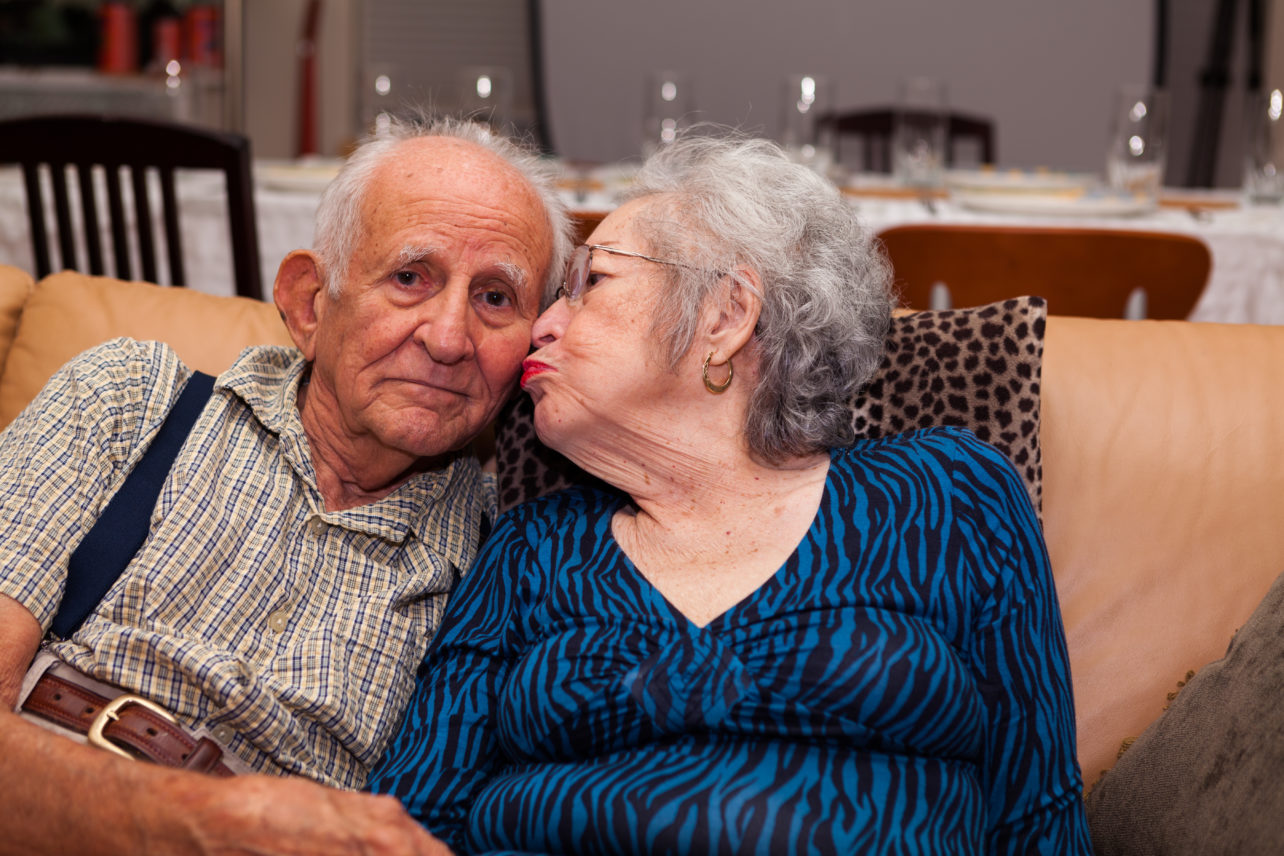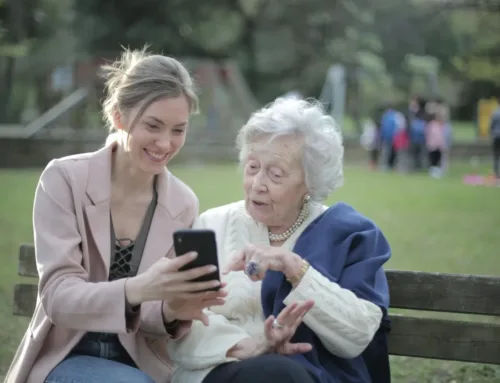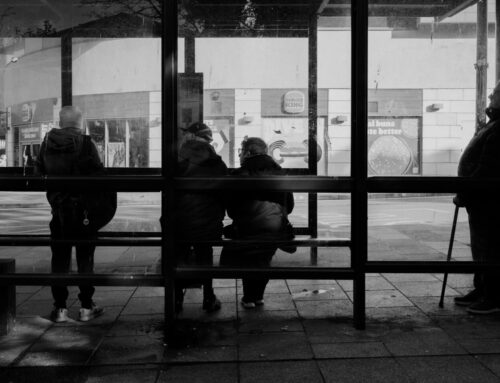Three out of four adults 50 years and older prefer to stay in their homes or communities as they age. This is often referred to as ‘aging in place.’ Still, just over half of older individuals don’t think that this is possible.
There are various considerations to take into account when deciding whether aging in place is the best option for you or your loved one. One needs to think about whether aging in place will provide you with everything you need to sustain your physical, social, and emotional wellbeing. All of this potentially comes with a financial investment.
Staying in your home keeps things familiar and comfortable as you stay in familiar surroundings. However, aging in place does not always mean staying in your current home. It could simply mean staying in the same area. This enables you to continue participating in social activities and attending other events that have formed part of your life. In some instances, some minor adjustments and modifications could enable you to age in place in your current home. If you require more extensive changes to your current home, it may be a good idea to consider moving into a space that is better equipped to meet your long term care needs, such as an assisted living facility.
Some individuals enjoying independent living may require in home caregiving services. In these cases, the individual receives in home care from a qualified and experienced in home caregiver. Other persons may be able to maintain their independence by making some modifications and adjustments in their homes or investing in innovative products that are designed to make living in and moving around your home easier and safer.
Every year around 3 million Americans 65 years and older are treated for falls. This leads to 800,000 hospitalizations costing around $33,000 per stay. Home safety and accessibility features could lower the risk of requiring medical attention from a fall by 20%. These same features could reduce the risk of falling by around 50% if the individual is 75 years and older.
In some cases, investing in home modifications and installing accessibility and safety features could be set off by potential savings on medical expenses. Each dollar invested in the installation of this equipment or home modifications could save you the same on medical expenses. Elderly persons who are 75 years or older could even save a reduction of $1.50 for each dollar spent on making their home more senior-friendly.
The need to adjust home life and products used as one age in place.
Independent living older adults may find that they need assistance with everyday tasks. They could benefit from making adjustments or modifications in their homes or investing in devices that can make aging in place safer and more comfortable. This is especially true for individuals who have health concerns or who aren’t as steady on their feet as they used to be.
Aging adults may require assistance with personal care, doing household chores, preparing meals, and managing their health. Older persons who require little assistance could benefit from slight modifications around the home instead of employing an in home caregiver. Planning for this eventuality and implementing some changes around the home can see you or your loved one living in your (or their) home for longer. In some cases, especially if you choose to employ an in home caregiver, it may even completely eliminate the need to move into an assisted living or long term care facility.
There are a plethora of specially designed products for seniors who have decided to age in place. These independent living aids make living in your own home as an older adult easier and safer – keeping you in comfortable and familiar surroundings for longer.
While many of these assistive devices focus on fall prevention, some simply make independent living easier.
Changes that can make your home safer for individuals who want to age in place.
Home modifications could be expensive, although they don’t always have to be. Some construction work like widening doorways or installing wheelchair ramps could be a significant investment. On the other hand, installing inexpensive products like grab bars, slip-proof flooring, and specialized bathroom products could improve the safety of the home without costing very much.
Wider doorways and hallways.
Having wider doorways could make it easier for aging adults to move around in their homes. This is especially true if you or your loved one uses mobility aids like a walker, wheelchair, or mobility scooter.
Narrow hallways or areas where the person needs to make sharp turns could hinder their movement, especially if they are in a bulky wheelchair or mobility scooter. For these individuals, larger hallways or an open plan living space might be more suitable.
Ramps and traction tape.
Older adults may find it difficult to climb steps, especially if they suffer from arthritis or are unstable on their feet. They may also need ramps if they use mobility aids. In some cases, you may require a licensed contractor to install a ramp in your loved one’s home. These contractors are experienced and skilled in constructing a ramp that is set to a safe angle for senior citizens to use.
Ramps will make it safer and more accessible for older adults to navigate outside steps. They can also be installed indoors if there are a small number of steps or along thresholds that may be a trip hazard or make moving around in a wheelchair difficult.
Aging adults who are still mobile could benefit from having traction tape installed on stairs and walking surfaces. This tape adds some friction to the surface, lowering the risk of falling.
Walking surfaces.
Older adults who wish to age in place may need to consider making changes to their flooring as part of the fall prevention modifications they make in their homes. Loose mats or carpeting with a long nap could be a trip hazard. The nap is the loops or cuts of yarn that you walk on. You may need to replace floor covers with wall-to-wall carpets that have a shorter nap.
Smooth walking surfaces like hardwood, laminate, vinyl, or tile floors could be slippery, especially when they are wet. These surfaces may need to be replaced. Alternatively, older adults may prefer to use traction tape or rubberized mats with a short nap in areas where these floors could get wet and become slippery.
Kitchen aids and modifications.
Older persons who prefer to age in place may need to modify their kitchens. Lower countertops and sinks are more practical, especially if the person is in a wheelchair or uses a mobility scooter. They may also be more practical for individuals who find it difficult to stand for long periods of time, making it possible for them to sit on a chair or stool while preparing meals.
Persons with limited dexterity or strength may find specialized kitchen aids like automatic jar and can openers handy. They could also consider getting a kettle that is lightweight and easy to pour.
Bathroom modifications.
Walk-in tubs or showers equipped with bathroom aids like anti-slip mats or stickers are more accessible and safer to get in and out of than traditional bathtubs.
Alternatively, a bathtub transfer bench could help an older person get in and out of the bath with a lower risk of falling. The transfer bench straddles the outside rim of the bath. You then sit down on the bench and lift your legs into or out of the bath, one at a time.
A similar device is a bathtub chair. A bathtub chair sits inside the bath. The person sits down on the chair with their feet outside the bath. They can then move their feet into (or out of) the bath one by one. Bathtub chairs may be slightly trickier to use than bathtub transfer benches, but they take up less space in the bathroom.
A stable and sturdy shower bench can be installed in showers or walk-in tubs. This gives you a safe space to sit while in the shower. Senior citizens may start to avoid regular showers if they are scared of falling. Installing a shower chair could provide some peace of mind and maintain a level of independence. These devices can also offer more accessible access to therapeutic showers for individuals who have chronic swelling, pain, or suffer from arthritis.
Raised toilet seats reduce the distance between sitting and standing. This could make it easier for older people to assist themselves when using the bathroom. It also makes transfers from a wheelchair or other mobility aid easier and safer for the individual and their caregivers. Raised toilet seats could come with additional padding, backrests, splash guards, and straps to secure them to the toilet.
Other bathroom modifications can include a push button flush mechanism for the toilet and faucet handles that are easy to turn.
Grab bars.
Grab bars or safety bars are rails or handles that provide a place to hold on to for more security. It is relatively inexpensive to install these bars around the home. They are ideal for areas like the bathroom or toilet.
Grab bars could provide additional security when getting in and out of showers and baths. This is especially the case if you prefer to keep your conventional bathtub instead of installing a shower or walk-in tub.
Detachable safety bars can be used to assist older persons in getting into and out of cars. They offer an additional place to hold on to for support and security, often removing the need for assistance.
Seat assists.
Lifting seats can be placed on chairs, even armchairs or couches, to make getting up easier. These seats compress or get pushed down when you place weight on them. When the weight is lifted, the seat slowly pushes up, helping you to stand up.
Swivel seat cushions turn regular chairs into swivel seats. Swivel seats can be used on most chairs and could be especially handy when placed on a car seat. The swivel can make it easier to get in and out of vehicles. Bear in mind that these seats work best on flat surfaces and thus may not work as well in cars with bucket seats.
Lifts.
Hoyer lifts can be used for individuals who need more help getting out of beds or transferring from a bed or chair into a wheelchair. To use a Hoyer lift, the individual will need to be placed in a harness which makes transferring them easier. In most cases, a Hoyer lift cannot be used independently, and a caregiver will be required to provide assistance.
Staircases.
Older adults, especially those suffering from arthritis, may find it difficult to climb stairs. Banisters and handrails will make it safer using stairs, as will proper lighting. A stairlift may be required for persons who need to use a wheelchair or mobility scooter in multi-story homes or homes that have stairs where a wheelchair ramp cannot be installed.
Other products that make aging in place more comfortable.
Medical Alert Systems.
A medical alert system is an independent living product designed for elderly persons who wish to stay in their own homes as they age. These devices can include wall-mount panic buttons or wearables that can be worn on the wrist or around the neck or clipped onto clothing or bags.
A medical alert device monitors aging adults and usually has a panic button that connects the person to emergency services and their emergency contacts via a contact center. Many medical alert systems include a two-way speaker that enables the user to speak with persons in the monitoring center. They could also have a fall detection feature that alerts the monitor center, emergency services, or your loved ones when you have fallen.
Smart devices.
Smart devices around the home could make aging in place more comfortable, especially for tech-savvy baby boomers who choose to age in place. These devices allow you to speak to your electronic devices. Voice control can be enabled to turn your television, radio, or lights on and off. It can also be linked with a smart cell phone or tablet. This will allow users to set reminders for appointments or to take their medication. It also easily connects them with their contacts.
Automated lights could be convenient for individuals who are slightly less tech-savvy. These lights have motion sensors that automatically turn on the light when it picks up movement. This eliminates the need to search around for light switches in dark rooms.
Smart devices could be combined with automatic lighting for entry control. The smart device can also be linked with a video or intercom system. This enables the occupant to see who is at the door and communicate with these individuals before unlocking and opening the door.
Pill organizer.
Pill organizers or pill dispensers help senior citizens keep track of taking their medication. Most pill organizers have individual compartments that separate pills and tablets. These containers are labeled with the days of the week and, sometimes, different times of the days (morning, afternoon, and night).
There are a variety of different pill organizers on the market. Some are simple cases that keep each dose separate. These make it easy to see whether you have taken your medication or not. Other pill organizers have alarms that serve as a medication reminder to remind you to take your medication.
Mobility aids.
Mobility aids like walking canes or walking sticks, walkers, wheelchairs, or mobility scooters can all provide some stability for older people as they move around. These devices also offer additional support, especially if the person will be walking a lot or spend extended periods on their feet.
Medical equipment or health-related devices.
Having the equipment needed to monitor particular health concerns or conditions at home can reduce the need for frequent visits to a health professional. This can include medical equipment like nebulizers, blood pressure monitors, and portable oxygen tanks or concentrators. It can also include incontinence supplies and catheter kits or supplies if the individual needs these.
Help getting dressed.
Some older individuals may have limited motion or have difficulty with small motor tasks.
A dressing stick enables persons with limited mobility to get dressed. A button or zipper hook can assist aging adults in fastening their clothing. Sock aids and shoehorns with long handles make it easier for elderly persons to put on their socks and shoes.
Adaptive clothing can help overcome difficulties with getting dressed. Adaptive clothing is designed to make dressing and undressing easier. This could include magnetic closures instead of buttons or zippers, elasticized pants, and shoes with Velcro, elastic, or zippered openings.
Products for persons with low vision.
Low vision is the loss of vision that cannot be corrected with contact lenses, glasses, and surgery. It is most common in older adults or persons with glaucoma and diabetes. Individuals with low vision could find it easier to use products like television remotes and cell phones with large buttons that light up. Magnifying glasses or other visual aids can also help with daily tasks.
Simplifying daily tasks and senior safety are paramount considerations for persons who decide to age in place. In some cases, this can be achieved with a few minor and relatively inexpensive modifications. In other cases, an aging adult who wishes to age in place may need to consider moving into a home that is already better suited to their needs. Whether you stay in your current home or move, incorporating some changes in your surroundings can make aging in place simpler and safer.
References:
- The Top Bathroom Assistive Devices for Seniors in 2021 – InHomeCare
- 11 Kitchen Aids for Seniors to Safely Increase Independence – InHomeCare
- Top Assistive Devices to Keep Seniors on Their Feet – InHomeCare
- 9 Inexpensive Products that Make Life Easier for Seniors – InHomeCare
- In Home Care | Find Home Care Agencies and Jobs with InHomeCare.com
- Aging in Place: Growing Older at Home | National Institute on Aging (nih.gov)
- Innovative Products For Elderly: Make your life easier (seniorlivinghelp.co)
- 5 Must-Have Home Modifications for Seniors Aging in Place | AssistedLiving.org
- Carpeting Nap | Hopkins Carpet One | Minnesota Carpet Store
- Can a Hoyer Lift Be Used by One Person? | Barrier Free Store
- What is a Raised Toilet Seat & How to Choose One (rehabmart.com)
- 4 Promising Benefits of Shower Chairs for Elderly – Burt’s Pharmacy (burtsrx.com)
- Nonfatal Bathroom Injuries Among Persons Aged ≥15 Years — United States, 2008 (cdc.gov)
- American Seniors Prefer to “Age in Place”—But What’s the Right Place? | Urban Institute
- Home safety, accessibility, and elderly health: Evidence from falls (repec.org)
- 2018 Home and Community Preferences: A National Survey of Adults Ages 18-Plus (aarp.org)
- Fun After Fifty – Freddie Mac
- Keep on Your Feet—Preventing Older Adult Falls | CDC
- Stay Independent (cdc.gov)
- What You Can Do To Prevent Falls (cdc.gov)
- Check For Safety A Home Fall Prevention Checklist For Older Adults (cdc.gov)
- By 2030, All Baby Boomers Will Be Age 65 or Older (census.gov)
- The 2030 Problem: Caring for Aging Baby Boomers (nih.gov)
- Aging Baby Boomers to Face Caregiving, Obesity, Inequality Challenges | PRB
- Indicator Definitions – Older Adults | CDI | DPH | CDC
- Home adaptations for older people and people with disabilities – NHS (www.nhs.uk)
- Household equipment for older people and people with disabilities – NHS (www.nhs.uk)
- 6 Benefits of Stairlifts for Wheelchairs – Updated for 2021 – AgingInPlace.org
- Adaptive Clothing – Shop By Need Adaptive Clothing for Seniors, Disabled & Elderly Care (buckandbuck.com)
- Adaptive Clothing for Seniors, Elderly & Disabled – Silverts
- Types of Adaptive Clothing for Seniors (mmlearn.org)
- Low Vision: Causes, Treatment, & Prevention (clevelandclinic.org)




